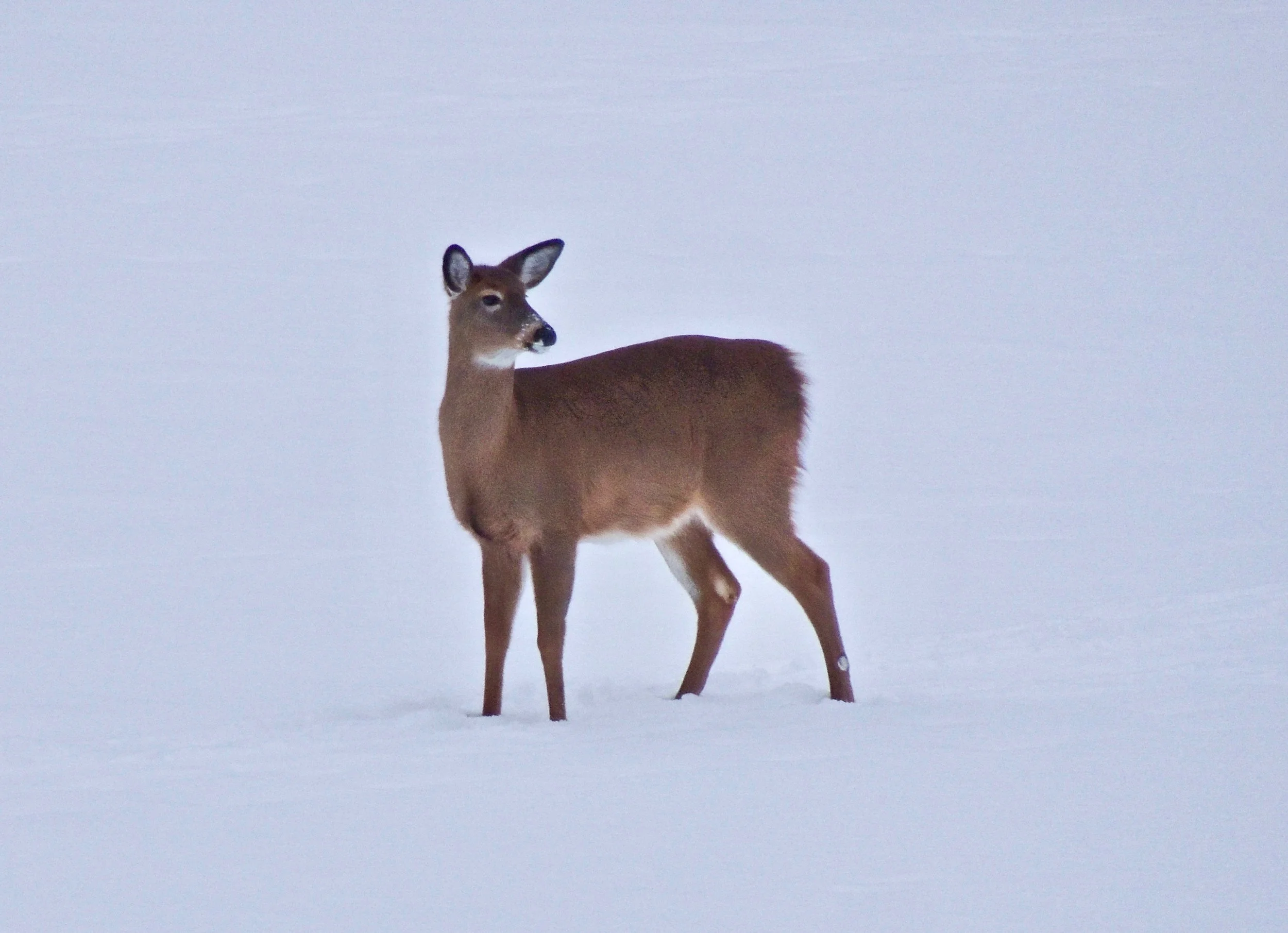Into the Woods with Curio: Deer In Winter
Doug Smith
“It is God who arms me with strength and keeps my way secure. He makes my feet like the feet of a deer; he causes me to stand on the
heights.” Psalm 18:32 & 33
Which animal hibernates during the winter, but still walks around every day?
Not a groundhog. They sleep all winter, except on Groundhog’s day.
Not a skunk. They sleep most of the time during the winter.
So do most raccoons, (unless they live in Toronto).
Chipmunks sleep most of the winter, though sometimes get up for a snack.
And bears sleep all winter, too.
Have you guessed? It’s a deer!
Deer are awake every day in the wintertime, but they are also hibernating! They do a ‘walking’ hibernation because they can’t find the grasses and other green plants that they normally eat during the rest of the year.
To help them survive the winter deer grow a layer of fat in the fall by eating acorns and beech nuts. That layer of fat helps them when there is not much to eat during the long winter.
They also grow a coat of long hair. This hair is hollow inside, and much thicker than normal hair, so it keeps the deer warm, even when it is really cold and windy.
They still eat during the winter, browsing on cedars, and the twigs and buds of young trees and shrubs, such as sumacs. They may visit a backyard bird feeder and eat the seeds that spill onto the ground.
The female deer, called does, are especially hungry because they are pregnant, usually with twins. And their fawns from last spring may still be with them, though they are almost fully grown, and can find food for themselves.
Because deer are unguligrade, that is, are hooved and walk on the tips their hooves, they cannot move about as easily in deep snow. When the snow gets deep, as it has this winter, the deer make ‘yards’. These are a series of paths, usually located in a group of cedar or hemlock trees for shelter, or in a swamp near a river or lake so they have water, and shrubs and young trees to browse. They stay in these ‘yards’ to save their energy. But living in such a restricted space makes it easier for predators, such as wolves, to find them. And, if the snow is really deep it’s hard for the deer to escape.
Winter is hard for deer, but a ‘walking hibernation’ helps them survive until spring comes, when there are grasses and other green plants for them to eat!
